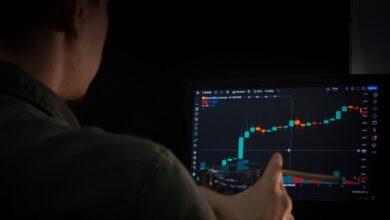Ultimate Guide to Choosing Mining Hardware

In the rapidly evolving landscape of cryptocurrency, the choice of mining hardware stands as a pivotal decision for both novice and seasoned miners alike. The right equipment not only influences profitability but also determines the overall efficiency and sustainability of mining operations. This comprehensive overview aims to illuminate the intricate factors involved in selecting the ideal hardware for cryptocurrency mining, ensuring that one makes informed choices grounded in a thorough analysis.
Determining the best devices requires an in-depth examination of several critical elements, including processing power, energy consumption, and initial investment costs. Each of these aspects plays a crucial role in shaping the long-term viability of one’s mining endeavors. By opting for appropriate mining equipment, individuals can maximize their returns while minimizing unnecessary expenses–a balancing act that demands careful consideration and strategic planning.
This detailed guide will explore various types of mining hardware available on the market today, offering insights into their respective advantages and limitations. From ASIC miners to GPU setups, understanding the nuances between these options is essential for selecting the right tools for your specific needs. As we delve deeper into this analysis, we will uncover key trends and innovations that are shaping the future of cryptocurrency mining, empowering you to make well-informed decisions that align with your goals.
Choosing the Right Mining Hardware: A Comprehensive Overview
In the rapidly evolving world of cryptocurrency, selecting the right mining hardware is pivotal for both novice and seasoned miners alike. The process of choosing appropriate equipment hinges on a multitude of factors, including hash rate, energy efficiency, and initial investment cost. This examination serves as a detailed guide to assist individuals in determining the best devices for their mining endeavors. By adopting a methodical approach, miners can ensure that their selections align with their specific goals in the cryptocurrency landscape.
To embark on this journey, one must first understand the fundamental types of mining hardware available today. ASIC (Application-Specific Integrated Circuit) miners have emerged as the most efficient option for Bitcoin mining, delivering unparalleled performance through specialized circuitry designed for this singular purpose. In contrast, GPU (Graphics Processing Unit) mining rigs remain popular among those who mine altcoins, offering flexibility and adaptability to various algorithms. This analysis underscores the importance of opting for hardware that not only meets current market demands but also possesses scalability for future developments.
Determining the ideal mining equipment involves a thorough examination of several critical parameters. For instance, evaluating the hash rate is essential; it represents the number of calculations a miner can perform per second, directly impacting potential earnings. Additionally, energy consumption plays a significant role in profitability. Miners must consider not only the upfront costs but also the long-term expenses associated with electricity usage. A comprehensive assessment of these factors will lead to informed decisions regarding which devices are best suited for individual circumstances.
Furthermore, it is vital to keep abreast of technological advancements within the industry. The cryptocurrency space is marked by rapid innovation, and staying informed can be advantageous when selecting hardware. For example, newer models may offer enhanced efficiency or reduced power consumption compared to their predecessors. This necessitates an ongoing commitment to research and understanding market trends to ensure that miners are always equipped with the best technology available.
In addition to technical specifications, prospective miners must also factor in their operational environment and personal expertise. For instance, while some may thrive in a home setup with basic GPU rigs, others may prefer large-scale operations utilizing numerous ASIC miners housed in dedicated facilities. The choice between these configurations should reflect not just financial capacity but also an assessment of technical skill and maintenance requirements involved in managing complex mining setups.
Ultimately, choosing the right mining hardware is not merely a matter of acquiring devices; it is about strategically positioning oneself within an intricate ecosystem characterized by volatility and opportunity. By engaging in an in-depth analysis that incorporates both present needs and future aspirations, miners can make educated choices that enhance their potential for success in this dynamic field. As you navigate your options, remember that informed decision-making is your greatest ally in the cryptosphere.
Understanding Mining Hardware Types
In the ever-evolving landscape of cryptocurrency, selecting the right mining hardware is not merely a technical exercise; it is an intricate decision that can profoundly impact profitability and efficiency. At its core, understanding the types of mining hardware is essential for anyone considering entering this complex arena. Broadly speaking, mining equipment can be categorized into three main types: ASIC miners, GPU rigs, and CPU miners. Each category presents distinct advantages and limitations, making it imperative for potential miners to conduct a thorough analysis before opting for any specific hardware.
ASIC (Application-Specific Integrated Circuit) miners are designed specifically for cryptocurrency mining, often yielding the highest hash rates and energy efficiencies compared to other types of hardware. This makes them ideal for those serious about maximizing their mining output. However, the initial investment can be substantial, and they are generally limited to mining specific cryptocurrencies. In contrast, GPU (Graphics Processing Unit) rigs offer greater versatility, allowing users to mine various coins by simply switching algorithms. While they may not match ASICs in raw performance, their adaptability makes them a popular choice among hobbyists and those interested in experimenting with different cryptocurrencies.
When determining the best mining devices for your needs, one must consider several factors beyond just cost and performance. The overall energy consumption is critical, as electricity costs can significantly affect profitability. A detailed examination of power requirements versus expected returns should be conducted to ensure that the chosen hardware aligns with one’s financial objectives. Furthermore, as the cryptocurrency market remains volatile, having equipment that can adapt to changes in mining difficulty or coin value becomes increasingly important.
To facilitate informed decision-making in selecting appropriate mining equipment, potential miners should utilize a comprehensive guide that covers all facets of the hardware landscape. This includes understanding not only the specifications of each device but also the implications of market trends, regulatory changes, and technological advancements on mining operations. Such an in-depth analysis would empower individuals to make strategic choices that align with their long-term goals.
Moreover, evaluating user reviews and community feedback can provide valuable insights into real-world performance and reliability of various mining hardware options. Engaging with online forums and platforms dedicated to cryptocurrency discussions can unveil common pitfalls and successes experienced by others in the field. This collective knowledge serves as an invaluable resource during the process of choosing the right equipment.
In conclusion, navigating the complexities of cryptocurrency mining hardware requires a meticulous approach rooted in factual data and thoughtful consideration. By conducting a thorough examination of available options–focusing on ASICs, GPUs, and CPUs–individuals can make informed decisions that enhance their chances of success in the competitive world of digital currencies. Whether one is aiming for high efficiency or flexibility in mining strategies, understanding these nuances is crucial for anyone serious about participating in this dynamic market.
Key Factors for Selection
Choosing the right mining hardware is a decision that requires a detailed examination of various factors that contribute to optimal performance and profitability. The first aspect to consider is the type of cryptocurrency you intend to mine, as different coins utilize distinct algorithms that demand specific hardware capabilities. For instance, Bitcoin mining typically requires ASIC (Application-Specific Integrated Circuit) devices, which are designed for maximum efficiency in processing SHA-256 hashing functions. In contrast, mining Ethereum may be more suited to high-performance GPUs (Graphics Processing Units), which can handle the Ethash algorithm effectively. Understanding these nuances is crucial for selecting the appropriate equipment.
Another significant factor in determining the best mining devices is their energy efficiency. Mining operations consume substantial amounts of electricity, and the cost of power can significantly impact profitability. When opting for ideal cryptocurrency hardware, one must analyze the hash rate relative to power consumption–measured in watts per gigahash. Devices with higher hash rates and lower power usage will yield better returns over time. Furthermore, examining the thermal management of the hardware can help prevent overheating, which could lead to diminished performance or even hardware failure.
Equally important is the consideration of initial investment versus potential returns. Selecting mining equipment involves not only purchasing costs but also ongoing maintenance and cooling expenses. A thorough analysis of market trends and profitability calculators can aid in making informed decisions about which devices will deliver the best return on investment over a given period. Researching manufacturer reputations and user reviews can provide valuable insights into reliability, longevity, and resale value of specific models.
Lastly, it is essential to stay abreast of technological advancements within the cryptocurrency space. The rapid evolution of mining hardware means that what may be considered the best device today could quickly become obsolete tomorrow. Engaging in an in-depth analysis of upcoming technologies and emerging trends can empower miners to make proactive choices rather than reactive ones. By adopting a holistic approach that encompasses all these factors, individuals can ensure they are choosing the right mining hardware that aligns with their objectives and maximizes their potential for success in this dynamic field.
Conclusion: Choosing the Right Mining Hardware
In the intricate world of cryptocurrency mining, determining the best devices to invest in is not merely a matter of preference but an essential decision that can significantly shape your success. The landscape of mining hardware is both vast and nuanced, demanding an in-depth examination of available options. As we have explored throughout this guide, the right mining hardware is not only about raw power; it also encompasses factors like energy efficiency, longevity, and compatibility with various cryptocurrencies.
As you embark on your journey of selecting the appropriate mining equipment, remember that each miner’s situation is unique. What may be ideal for one individual could be suboptimal for another. Thus, thorough analysis and thoughtful deliberation are paramount. With so many options available today–from ASIC miners designed for specific algorithms to versatile GPUs suitable for a range of tasks–the choices can seem overwhelming. However, by following a structured approach and considering both your immediate needs and future aspirations, you can navigate this complex terrain with confidence.
Key Considerations in Selecting Mining Hardware
- Efficiency: Evaluate the energy consumption versus hashing power to maximize profitability.
- Compatibility: Ensure that the hardware aligns with the cryptocurrencies you wish to mine.
- Scalability: Choose equipment that allows for future upgrades and expansion as your operation grows.
- Cost: Always factor in initial investment alongside potential returns over time.
Ultimately, opting for the right mining hardware is an exercise in balancing logic with passion. It is about understanding not just the numbers, but also the underlying technology and community that drives this vibrant ecosystem. By engaging in detailed research and embracing a holistic perspective, you will emerge not just as a miner but as a knowledgeable participant in a rapidly evolving digital frontier. In this pursuit, let curiosity guide you and innovation inspire you–as you lay your own foundations in the fascinating world of cryptocurrency mining.





